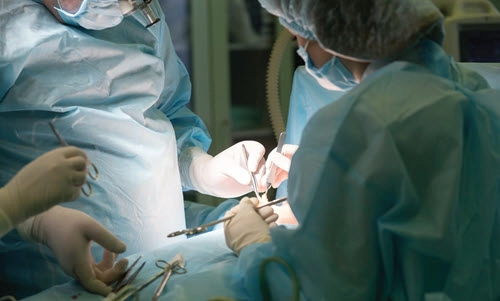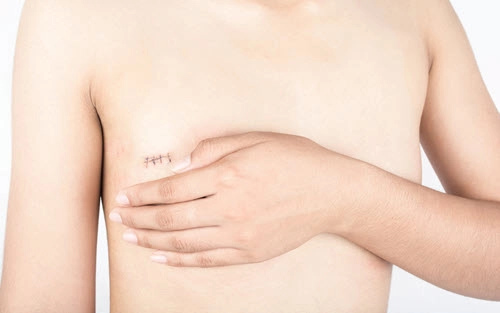CPT® 2021:
Master New Breast Reconstruction/Repair Guidelines
Published on Wed Mar 17, 2021
Learn which steps you can separately report.
In addition to nearly 20 code changes we elucidated in “Update Your Breast Reconstruction/ Repair Coding Know-How” (General Surgery Coding Alert Vol. 23, No. 1), CPT® 2021 adds an extensive new guideline section.
Let our experts break down the guidance for you to clarify how you should report breast reconstruction and repair cases.
Understand 2 Reconstruction Categories
CPT® 2021 indicates that the goal of breast reconstruction is to restore form and symmetry following surgery, or otherwise correct anatomic defect.
With that understanding, we can organize breast reconstruction into two groups, which the surgeon may perform on one or both breasts:
- Post mastectomy: This may involve a breast implant or autologous reconstruction using a skin flap and subcutaneous fat/muscle.
- Native breast alteration: Surgeons may accomplish this using mastopexy, reduction, or implant techniques.
Key: The codes for breast reconstruction cases may overlap, but “each technique can stand alone,” according to the new CPT® guidelines, indicating that you may report multiple codes in some cases. Also, reconstruction may involve multiple planned procedures and may require revision at future encounter(s).

Focus Post Mastectomy Implant Coding
For mastectomy reconstruction using an implant, you can guide your code choice by answering the following questions:
Question 1: Does the surgeon insert an implant (fluid-filled device) at the same session as the mastectomy?
- Yes: Turn to code 19340 (Insertion of breast implant on same day of mastectomy (ie, immediate)), which you’ll report along with the appropriate mastectomy code, such as 19303 (Mastectomy, simple, complete).
- No: For placing the implant at a later date, use 19342 (Insertion or replacement of breast implant on separate day from mastectomy) on the later date.
Tip: If the surgeon removes an existing implant at the time of placement, don’t report a separate code for removal in addition to 19342, which describes replacement or insertion. “Replacement means removing what’s there and inserting a new implant,” says Terri Brame Joy, MBA, CPC, COC, CGSC, CPC-I, billing specialty subject matter expert at Kareo in Irvine, CA.
Save the removal codes (19328, Removal of intact breast implant and 19330, Removal of ruptured breast implant, including implant contents (eg, saline, silicone gel)) for cases when the surgeon doesn’t replace the implant in the same session.
Remember: CPT® 2021 revises code 19340; the old description specifically included immediately inserting an implant after not just a mastectomy, but also after mastopexy and/or reconstruction, explains Karen Pickering, RHIT, CCS, founder of ReviewMate and Senior Consultant for Pinnacle Enterprise Risk Consulting Services LLC.
Question 2: Does the surgeon insert a spreader, instead of an implant, on the date of the mastectomy to create an adequate skin envelope for later implantation?
- Yes: Report 19357 (Tissue expander placement in breast reconstruction, including subsequent expansion(s)) in addition to the mastectomy code. When the surgeon later removes the expander and places an implant, you can report 11970 (Replacement of tissue expander with permanent implant).
- No: Stick with just the mastectomy code.
Distinguish Post Mastectomy Autologous Reconstruction
CPT® 2021 updates the following five codes for flap breast reconstruction:
- 19361 (Breast reconstruction; with latissimus dorsi flap)
- 19364 (… with free flap (eg, fTRAM, DIEP, SIEA, GAP flap))
- 19367 (… with single-pedicled transverse rectus abdominis myocutaneous (TRAM) flap)
- 19368 (… with single-pedicled transverse rectus abdominis myocutaneous (TRAM) flap, requiring separate microvascular anastomosis (supercharging))
- 19369 (… with bipedicled transverse rectus abdominis myocutaneous (TRAM) flap)
The new guidelines clarify that each of these codes includes flap harvesting, donor site closure, and placing/shaping the flap.

The guidelines also provide the following insights for each code:
- 19361: Surgeons may use a tissue expander or implant with latissimus dorsi muscle flaps, and you should separately report that work with the appropriate code 19357, 19340, or 19342.
- 19364: Common free flaps include free transverse rectus abdominus myocutaneous (fTRAM), deep inferior epigastric perforator (DIEP), superficial inferior epigastric artery (SIEA), or gluteal artery perforator (GAP).
- Transverse rectus abdominus myocutaneous (TRAM) flaps may be single pedicled with just the blood supply from the lower abdomen (19367), or with an additional blood supply, such as the epigastric artery and/or veins (19368).
- TRAM flaps may also be bipedicled (19369) in which both rectus abdominus muscles are used to reconstruct a single breast.
Check Out Native Breast Alteration
To correct a defect or create symmetry in the contralateral breast following mastectomy, surgeons may perform the following procedures at the same or separate surgical sessions, according to the guidelines:
- 19316 (Mastopexy)
- 19318 (Breast reduction)
- 19325 (Breast augmentation with implant)
Don’t Miss Additional Procedures
Surgeons may perform several ancillary services during breast reconstruction, such as the following:
- 19350 (Nipple/areola reconstruction)
- 19370 (Revision of peri-implant capsule, breast, including capsulotomy, capsulorrhaphy, and/or partial capsulectomy)
- 19371 (Peri-implant capsulectomy, breast, complete, including removal of all intracapsular contents)
- 19380 (Revision of reconstructed breast (eg, significant removal of tissue, re-advancement and/or re-inset of flaps in autologous reconstruction or significant capsular revision combined with soft tissue excision in implant-based reconstruction))
Code 19380 earned extensive explanation in the new guidelines, as follows:
- For autologous reconstruction cases, the guidelines list the following components that the 19380 procedure may include:
- Significant excision of tissue re-advancement
- Re-inset of flaps
- Revision of flap position on the chest wall
- Removal of portions of the flap (excision or liposuction)
- Reshaping the flap
- Scar revision
- For implant-based reconstruction, the guidelines state that the 19380 procedure describes revisions to skin and capsule performed together.
- You may separately report placement of new implant (19342) or autologous fat grafting (15771, +15772, Grafting of autologous fat harvested by liposuction technique to trunk, breasts, scalp, arms, and/or legs; …) during the 19380 procedure.
- If the revision involves a single step for which CPT® provides a distinct code, such as scar revision (e.g., 13101, Repair, complex, trunk; 2.6 cm to 7.5 cm), then you should report the more specific code instead of 19380.
Finally, the guidelines also clarify that code 19350 includes the following steps, and you should not additionally report the separate codes:
- Flaps (14000, 14001, Adjacent tissue transfer or rearrangement, trunk; …)
- Areolar skin grafting (15100, +15101 Split-thickness autograft, trunk, arms, legs; 15200, +15201 Full thickness graft, free, including direct closure of donor site, trunk; )
- Subsequent tattooing (11920, 11921, +11922, Tattooing, intradermal introduction of insoluble opaque pigments to correct color defects of skin, including micropigmentation;…)






